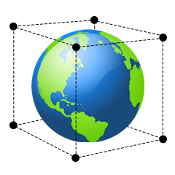During the industrial era, those who governed sought to measure success by focusing solely on GDP, or gross domestic product (the total output of goods and services). This economic model is based on the assumption of unlimited growth in a limited world. Over the last few years this model has increasingly been called into question because it takes into account only economic activities to the exclusion of a range of other activities in a society.
With the emergence of the post-industrial era, governments are beginning to consider using a measure known as GNH (Gross National Happiness). See the Buddhist-inspired GNH of Bhutan (Dzongkha), the HDI (indices of human development) of the UN and the Better Life Index of OECD, which measures what matters most to citizens. See also the STEEP model from the US think tank ISS (Social, Technological, Environmental, Economic and Political).
Many of these projects were more or less inspired by Abraham Maslow’s needs analysis (A Theory of Human Motivation, 1943, interpreted as a pyramid):

Here is the example of a World System model as proposed by the Scottish International Future Forum (a two-dimensional model with 12 factors):

During the industrial era, those who governed sought to measure success by focusing solely on GDP, or gross domestic product (the total output of goods and services). This economic model is based on the assumption of unlimited growth in a limited world. Over the last few years this model has increasingly been called into question because it takes into account only economic activities to the exclusion of a range of other activities in a society.
With the emergence of the post-industrial era, governments are beginning to consider using a measure known as GNH (Gross National Happiness). See the Buddhist-inspired GNH of Bhutan (Dzongkha), the HDI (indices of human development) of the UN and the Better Life Index of OECD, which measures what matters most to citizens. See also the STEEP model from the US think tank ISS (Social, Technological, Environmental, Economic and Political).
Many of these projects were more or less inspired by Abraham Maslow’s needs analysis (A Theory of Human Motivation, 1943, interpreted as a pyramid):

Here is the example of a World System model as proposed by the Scottish International Future Forum (a two-dimensional model with 12 factors):


Leave A Comment